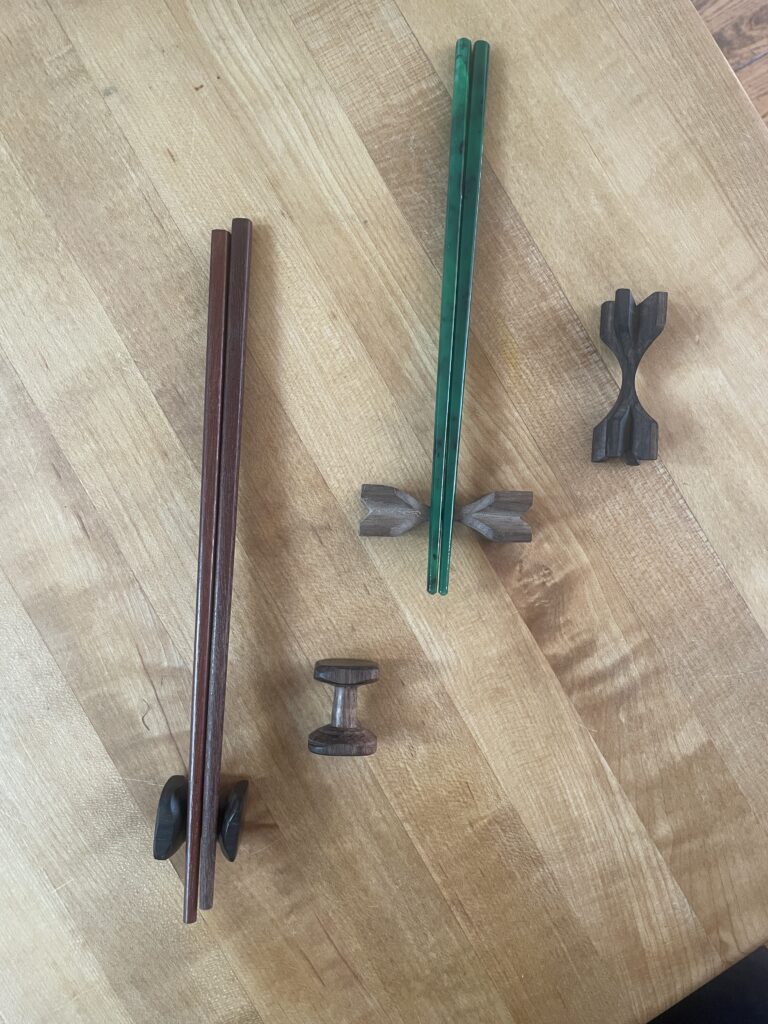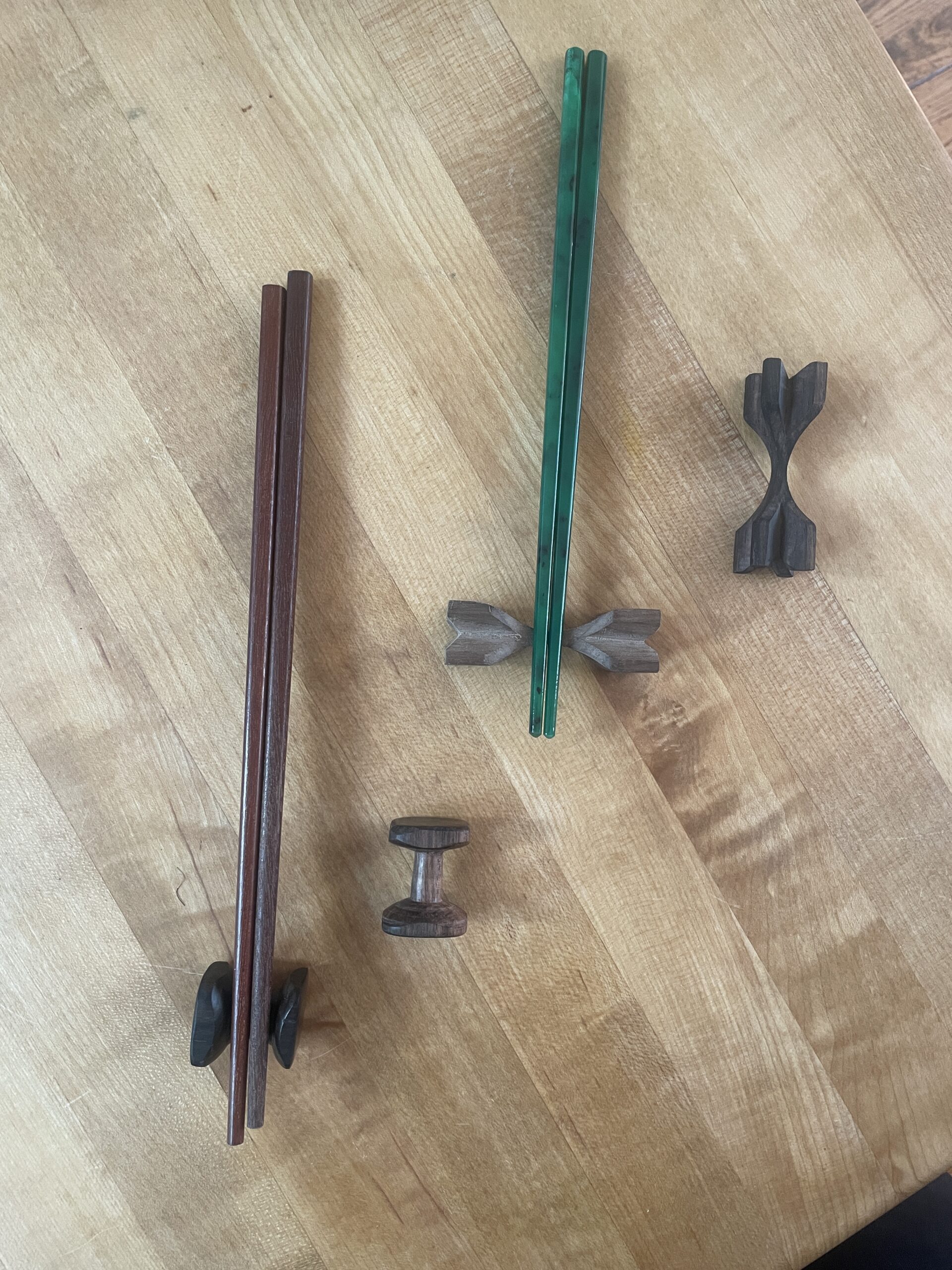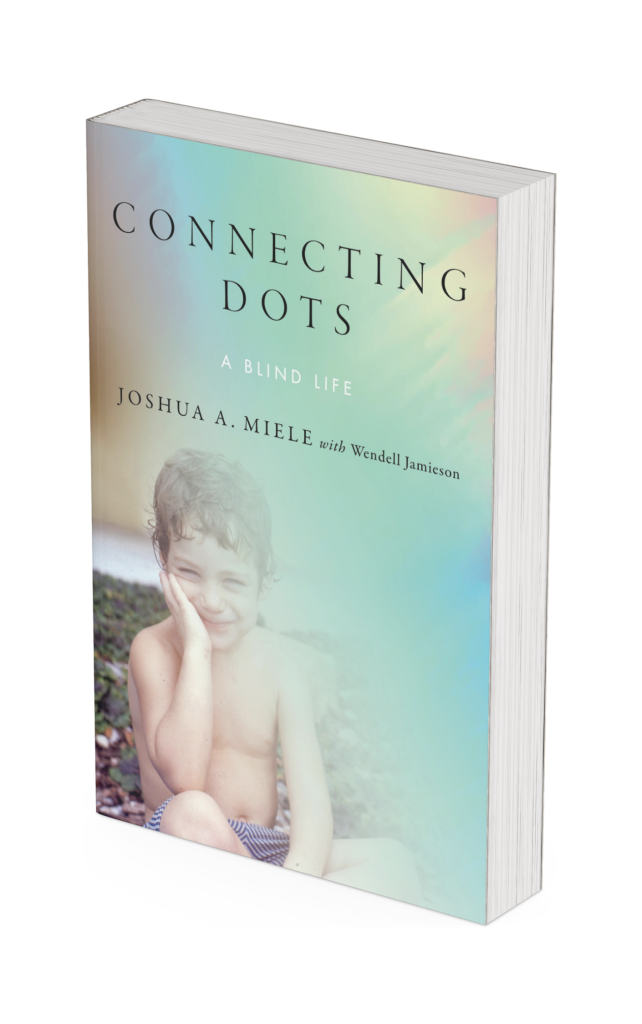My accessibility work is almost entirely in the digital domain. Tools I help create are generally software or hardware, and they have a definite shelf life — they only live as long as their ecosystem survives. When an operating system, CMS, or framework is updated, digital products almost always have to be updated if we want them to keep working.
But that’s the price we pay for keeping our apps and devices shiny and new, with perhaps a touch of planned obsolescence. For things to keep getting better, we must prepare for change — a developer’s work is never done. Unfortunately, this means that the digital experiences into which I pour my accessibility heart and soul are always ephemeral. Like a sand painting or an ice sculpture, their time is constrained by their media and environments.
One of my personal pleasures is woodworking. There’s something incredibly satisfying about building physical objects that don’t depend on a shifting digital foundation for their very existence. When I build a box, or a piece of furniture, or a sculpture, it remains in the world indefinitely. Wood does requires specific humidity and temperature conditions, and it can be broken, scarred, scratched, and damaged in all kinds of ways, but if a piece is reasonably-well cared for, it can survive for hundreds of years. There’s something extremely satisfying about that kind of permanence.
What About Digital Tools?
It’s a good thing I enjoy the physicality of making things with my hands, though, because it’s really my only practical choice.
Blind people have long use digital tools to design and shape audio, and blind developers may derive satisfaction from beautifully-structured code, but using digital tools to bring art from the imagination into the physical world remains a significant challenge for blind people. Sighted artists have easy access to powerful tools to create digital images and 3-D models with the click and drag of a mouse pointer. While some blind folks have learned to code in SVG or using OpenSCAD, they both have a very steep learning curve. And, while we’ve learned to independently send models to 3-D printers, creating them is still largely inaccessible. But it’s the inaccessibility of the digital design tools, not the lack of blind creativity, that keeps digital art and 3-D design the almost exclusive province of sighted creatives. So I, along with most blind artists, still create using older, more manual methods.
How We Learn
I’m lucky to have access to a small, reasonably well equipped, wood shop. I’m also lucky to have had the opportunity to learn how to use manual and power tools from a number of amazing blind and sighted mentors. I am far from unique — there are many other blind woodworkers out there, and many are incredible artists and teachers. We use all the tools that sighted woodworkers use — from band saws to welders. If that surprises you, you still have a lot to learn about blindness.
Like almost everything else in the world, blind people can do it, and do it well, whatever “it” may be. It usually requires learning or developing alternative tools or techniques, and that’s the trick. The easiest way to learn about these adaptations is to find the right blind (or sometimes sighted) mentors, online or in person. The Internet has made this kind of information gathering much easier, but persistent an intrepid blind people are always experimenting, discovering, and rediscovering how to do cool stuff like using table saws and routers by touch and sound.
Making Chopstick Rests
The last couple of years I have designed and fabricated batches of wooden chopstick rests — simple tableware items that keep chopsticks in place and their tips off the table. I make as many as time and patience allow, gifting sets to family and friends (we can only use so many chopstick rests in our house). Imagining the rests themselves is only the first step. Once I’ve come up with the shape, I need to develop a process for easy duplication. This involves engineering clever jigs or holders to make the process reasonably replicable. They are all basically dumbbell-shaped and symmetrical so it doesn’t matter which side is up. The chopsticks rest in an indentation in the middle. The 2023 rests were made on a lathe. They’re shaped like a short spool with a thin spindle and squared ends, each about an inch-and-a-half long. In 2024 I used a large rounded router bit to carve deep curves into all four long sides of a square dowel about two-and-a-half inches long. This left a very thin connection between the two square ends. I then used a conical router bit to form the ends into an X-shape a little like the fins of a dart. Others are welcome to add to my descriptions in the comments.

The pure physicality of wood is such a pleasure — iits shape and texture, its course grain or glossy polish offer powerful tactile satisfaction. Along with the permanence of the pieces, the creative process, the joy of making something with my hands, the smell of the sawdust and the freshly cut wood, the sensual feel of the highly polished and oiled pieces as I roll them around in my hand are all part and parcel of the pleasure I derive from making these helpful little dining companions. They also serve as my proxy, keeping company with my loved ones and their sushi when I cannot. Indeed, the greatest pleasure may come from knowing that my small creations are scattered far and wide among my friends and family — that I’m sharing them, and that their enduring form and function may serve and delight far into the future.

